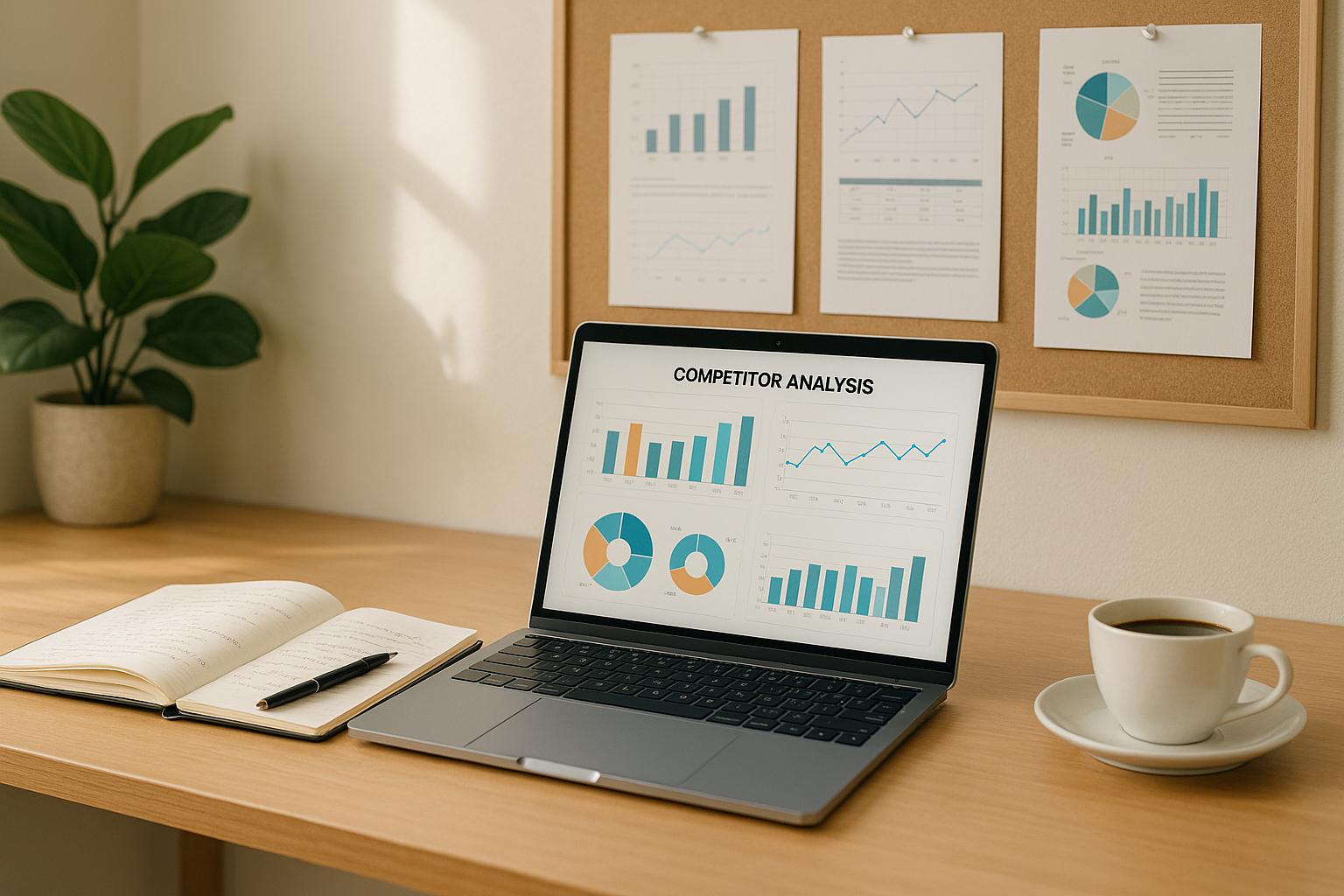In 2025, mobile SEO is critical for e-commerce success. With most shoppers using smartphones, optimizing your site for mobile ensures better search rankings, faster loading times, and a seamless shopping experience. Here's a quick checklist to get started:
- Site Speed: Compress images (use WebP), enable caching, and minify code.
- Design: Use responsive layouts, mobile-friendly buttons, and readable text sizes.
- Content: Use short paragraphs, clear headings, and optimized product descriptions.
- User Experience: Simplify checkout, add voice search, and improve navigation.
- Testing: Regularly check mobile performance using tools like Google’s Mobile-Friendly Test.
- Local SEO: Update your Google Business Profile and use local schema markup.
Mobile SEO: The Ultimate Guide
Mobile Design Basics
Nailing your e-commerce site's mobile design is essential for both search engine rankings and creating a smooth user experience. These design tweaks work hand-in-hand with technical and content improvements to enhance mobile SEO.
Responsive Design Setup
Use a fluid grid system with relative units to make your layout flexible. Set up breakpoints for different screen sizes:
- Small phones: 320px to 480px
- Large phones: 481px to 767px
- Tablets: 768px to 1024px
- Desktops: 1025px and above
Always test your design on actual devices to ensure everything looks and works as expected.
Mobile-Friendly Buttons and Links
Design buttons and links with mobile users in mind. Make sure touch targets are large enough and easy to tap. Place critical buttons - like "Add to Cart" or "Checkout" - where they're easy to reach, usually in the center or bottom of the screen.
Text Size and Contrast
Use text sizes that are easy to read without zooming. Create a clear visual hierarchy with your typography, and ensure strong contrast between text and background for readability in all lighting environments. Test your text on multiple devices to confirm it looks great everywhere.
Technical SEO Setup
Effective technical optimization is key to boosting mobile SEO for e-commerce sites. Below are essential steps to enhance your site's mobile performance.
Speed Improvements
Mobile users expect fast-loading pages. Here's how to make your site quicker:
Image Optimization
- Compress product images using formats like WebP for faster loading times.
Server-Side Tweaks
- Enable browser caching to reduce load times for returning visitors.
- Minify CSS, JavaScript, and HTML to cut down on unnecessary code.
Additionally, a clean URL structure can make mobile navigation smoother and improve indexing.
Mobile URL Structure
Once performance is optimized, focus on creating a clear and SEO-friendly URL structure. Here’s what to keep in mind:
- Use hyphens (-) to separate words for better readability.
- Keep URLs short and to the point.
- Naturally include relevant keywords.
- Ensure consistency in URL patterns across product categories.
Example URL Structure:
domain.com/category-name/product-name
domain.com/mens-shoes/running-sneakers
Mobile Content Setup
Optimizing content for mobile devices involves careful attention to formatting, images, and product descriptions.
Mobile Content Planning
Mobile users interact with content differently than those on desktops. To make your content easy to read on smaller screens:
- Break text into short paragraphs of 2–3 sentences
- Use clear subheadings to help users navigate
- Highlight key features with bullet points
Organize your content with a clear structure, moving from broad overviews to specific details. Once your text is ready, focus on optimizing product images for better performance on mobile.
Product Image Setup
| Aspect | Recommendation | Purpose |
|---|---|---|
| Format | Use WebP with JPEG fallback | Balance quality and size |
| Compression | Reduce file size | Preserve visual quality |
| Lazy Loading | Enable for below-fold images | Speed up initial loading |
Utilize responsive images with the srcset attribute to ensure the right image size is displayed based on the user's device:
<img srcset="small.jpg 300w,
medium.jpg 600w,
large.jpg 900w"
sizes="(max-width: 320px) 280px,
(max-width: 640px) 580px,
800px"
src="fallback.jpg"
alt="Product description with targeted keywords">
This approach ensures optimal load times and visual quality across devices.
Mobile Product Descriptions
-
Start with the essentials
- Highlight the most important product details upfront
- Use concise bullet points to grab attention
-
Use expandable sections
- Place detailed specifications in collapsible areas
- Include technical information in expandable tabs
This layout keeps your product descriptions clean and user-friendly for mobile shoppers.
sbb-itb-5be333f
Mobile User Experience
Improving the mobile user experience can help boost search rankings while making shopping easier and more enjoyable for users. Focus on optimizing key areas to create a smooth and efficient experience for mobile shoppers.
Quick Checkout Steps
Simplify the checkout process to lower the chances of cart abandonment:
- Keep form fields to the absolute essentials.
- Include multiple payment options, such as digital wallets and saved cards.
- Allow guest checkout for quicker transactions.
- Add progress indicators so users know how far along they are in the process.
- Use real-time validation to reduce mistakes during form completion.
A smooth checkout experience, combined with effective search tools, can significantly improve mobile usability.
Mobile Search Features
Make finding products easier with mobile-friendly search tools:
-
Voice Search Integration
Incorporate natural language processing to handle conversational queries. For example, users might search for "red sneakers under $100" or "waterproof hiking boots size 10." -
Smart Autocomplete
Set up the search bar to show popular searches, product categories, and recommendations as users type. -
Filter Optimization
Design touch-friendly filters, such as 44x44 pixel checkboxes, easy-to-use price sliders, clear color swatches, and simple category shortcuts.
Keep the search bar fixed at the top for easy access, and consider adding a visual search tool that lets users upload images to find similar products. These features can make product discovery faster and more intuitive.
Testing and Tracking
Regular testing and monitoring of your mobile site can help improve its performance and identify potential issues.
Mobile Testing Tools
Google's Mobile-Friendly Test is a quick way to assess how well your site works on mobile devices. Run this test frequently on key pages, especially after major updates or product launches. Pay attention to these areas:
- Viewport Configuration: Check that your site scales correctly on different screen sizes.
- Touch Element Spacing: Ensure buttons and links are easy to tap, ideally around 44x44 pixels.
- Content Width: Verify that your content fits the screen without requiring horizontal scrolling.
- Font Readability: Confirm that text is easy to read without zooming.
For a more thorough review, consider additional tools suggested by the Top SEO Marketing Directory.
Once your design elements are in order, shift focus to performance metrics.
Mobile Performance Data
Use tools like Google Analytics and Search Console to track key metrics such as page load times, bounce rates, conversion rates, and cart abandonment. Comparing these metrics with industry standards and your past performance can help uncover areas for improvement.
Local Mobile Search
Use your performance insights to boost visibility in local search results.
- Google Business Profile Updates: Keep your business details current, including store hours, holiday schedules, photos, special promotions, and product availability.
- Store Locator: Design a mobile-friendly store locator featuring interactive maps, real-time inventory updates, driving directions, and click-to-call options.
- Local Schema Markup: Add local business schema to make your location details - like address, phone number, and hours - easier for search engines to understand and display in local search results.
These steps can enhance your mobile site’s usability and improve its local search presence.
Conclusion
By 2025, mobile SEO will be a cornerstone of e-commerce success. Every aspect, from design to technical setup, plays a role in creating a smooth and enjoyable mobile shopping experience.
Here are the top priorities for e-commerce businesses:
- Keep mobile loading speeds fast and consistent
- Design user-friendly navigation with touch-friendly features
- Optimize product images and descriptions for mobile screens
- Strengthen local search optimization efforts
- Conduct regular testing and monitor performance
These steps align perfectly with a well-rounded mobile SEO approach. The Top SEO Marketing Directory offers tools to help with technical audits, content adjustments, and tracking performance.
For extra help, businesses can explore professional services through the directory’s curated database. It covers everything from improving site speed to refining local search strategies.
Mobile SEO isn’t a one-time task - it’s an ongoing process. By sticking to this checklist, your e-commerce site will be ready to attract and engage the growing mobile audience while staying visible in search results.
FAQs
How can I keep my e-commerce site loading quickly on mobile devices?
To ensure your e-commerce site maintains fast loading speeds on mobile devices, focus on the following key areas:
- Optimize images: Use compressed image formats like WebP and implement lazy loading to reduce initial page load times.
- Minimize code: Remove unnecessary JavaScript, CSS, and HTML. Use minification tools to streamline your site’s code.
- Enable caching: Implement browser caching to store static resources locally on users’ devices for faster repeat visits.
- Use a Content Delivery Network (CDN): CDNs distribute your site’s content across multiple servers, reducing latency and improving load times for users across different locations.
Additionally, regularly test your site’s performance using tools like Google PageSpeed Insights or Lighthouse to identify and fix any bottlenecks. A fast-loading site not only improves user experience but also boosts your mobile SEO rankings.
How can I optimize product descriptions for mobile users on my e-commerce website?
To optimize product descriptions for mobile users, focus on clarity, brevity, and readability. Mobile screens are smaller, so concise and engaging content is key. Use short sentences, bullet points for key features, and avoid large blocks of text.
Make sure your descriptions include relevant keywords naturally to improve mobile SEO. Prioritize user intent by addressing common questions or concerns about the product. Additionally, ensure the text is easily scannable with proper spacing and a mobile-friendly font size.
Finally, include high-quality images and, if possible, short videos to complement the written content. Visual elements can enhance the shopping experience and help users make informed decisions on mobile devices.
How can I boost my e-commerce site's visibility in local mobile search results?
To improve your e-commerce site's visibility in local mobile search results, focus on optimizing for local SEO and ensuring a seamless mobile user experience. Start by claiming and optimizing your Google Business Profile with accurate business details, including your address, phone number, and operating hours. Use location-specific keywords in your content, meta tags, and product descriptions to target local searches.
Additionally, make sure your website is mobile-friendly by using responsive design, fast-loading pages, and intuitive navigation. Structured data, such as local business schema, can also help search engines better understand your site and improve visibility in local searches. Regularly updating your site with fresh, relevant content tailored to your local audience can further enhance your rankings.


